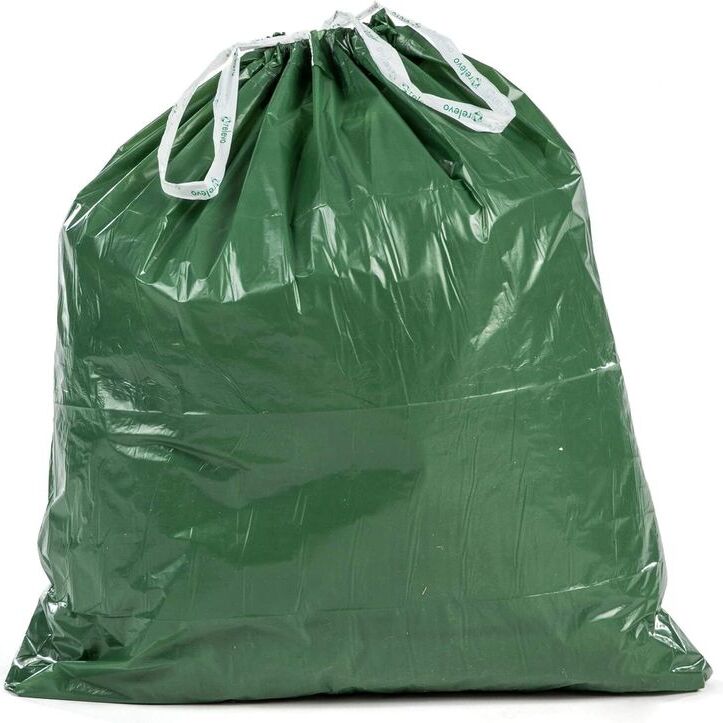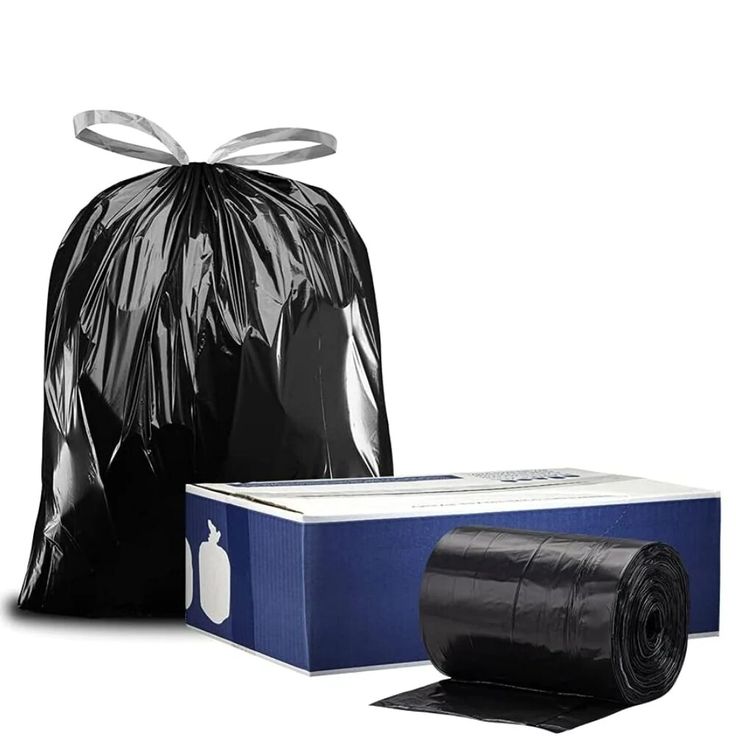What is Landscaping Fabric?
Landscaping fabric is an essential tool used by many gardeners to combat the persistent problem of weeds. This permeable textile allows water and air to pass through while being sturdy enough to block sunlight from reaching the soil beneath it. By limiting sunlight exposure, landscaping fabric significantly reduces weed growth, making it an effective component of a long-term weed prevention strategy in gardens and landscapes.
Landscaping fabric typically comes in convenient rolls or sheets. You can easily trim it to fit various plots and garden beds, providing flexibility for your specific landscaping needs. It’s best to install the fabric before planting flowers, shrubs, or trees to suppress weeds effectively in those areas. Commonly referred to as weed barrier or garden fabric, it enjoys popularity in both residential and commercial applications.
Choosing the right landscaping fabric can help your plants thrive while also saving you valuable time on maintenance and upkeep. Proper installation creates an ideal environment for healthy growth.
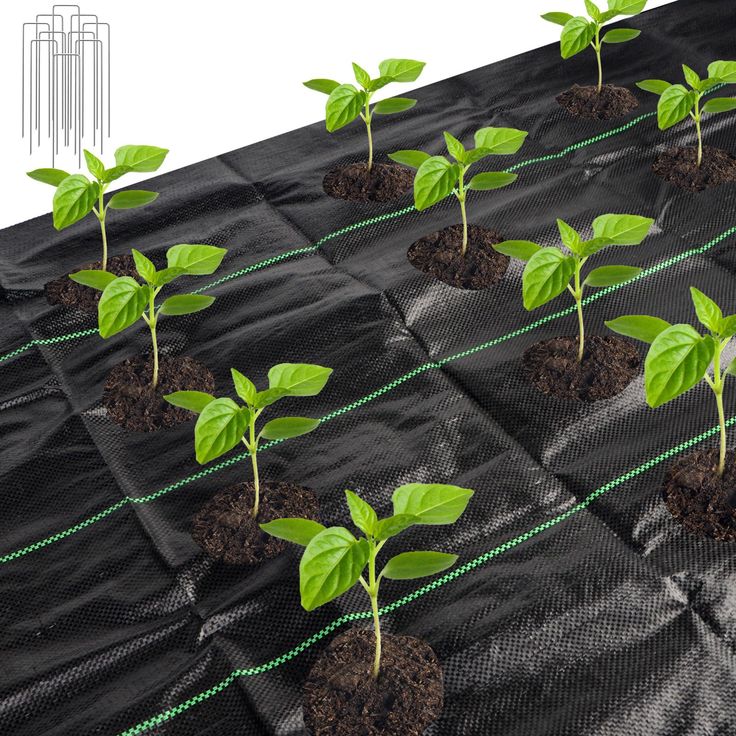
Benefits of Using Landscaping Fabric
By incorporating landscaping fabric into your garden, you reap various benefits. These advantages make it a prevailing choice among gardeners and landscape professionals. Here are the key benefits:
- Weed Control: This is the primary purpose of landscaping fabric. It blocks weeds from getting the sunlight they need to grow. Fewer weeds mean less time spent weeding.
- Soil Moisture Retention: Landscaping fabric keeps the soil moist by reducing evaporation. Plants get more water, which is especially useful during dry spells.
- Erosion Prevention: The fabric stabilizes soil and prevents it from being washed away by rain or wind. This is vital on slopes and in areas prone to erosion.
- Pest Reduction: A physical barrier like landscaping fabric can limit pests that thrive in garden soil.
- Cleaner Vegetables: Fabric can keep soil off your edible plants, resulting in cleaner vegetables that are easier to wash.
- Time and Labor Saving: With fewer weeds to handle and a maintained garden, you save time and effort, which could be spent on more enjoyable gardening tasks.
- Long-Term Durability: High-quality landscaping fabric can last for several years, making it a cost-effective solution.
Landscaping fabric offers a practical approach to garden management. It supports healthy growth for your plants while simplifying garden upkeep. Include it in your landscape plan and notice the positive changes in your gardening routine.
Types of Garden Fabric
When selecting landscaping fabric for your garden, knowing the different types available is crucial. Each type caters to specific needs and conditions of your outdoor space. Here are the main types of landscaping fabric:
- Spun Fabric: This type is made from polyester or polypropylene. Spun fabric is durable and suitable for heavy-duty applications. It works best under rock or mulch in permanent landscapes.
- Woven Fabric: Woven landscaping fabric is breathable and strong. It’s ideal for use around plants and trees. It prevents weeds while allowing air and water to reach plant roots.
- Non-Woven Fabric: Non-woven fabric is lighter and designed for temporary solutions. It’s often used for short-season crops in vegetable gardens or annual flower beds.
- Sheet Fabric: This is a plastic material usually black in color. It blocks out more light than other fabrics. Sheet fabric is often used in areas where you want complete weed control.
When choosing landscaping fabric, consider the durability, breathability, and UV resistance needed for your project. Assessing these factors ensures that you pick a type that aligns with your gardening goals. The right choice helps you maintain a weed-free garden efficiently.
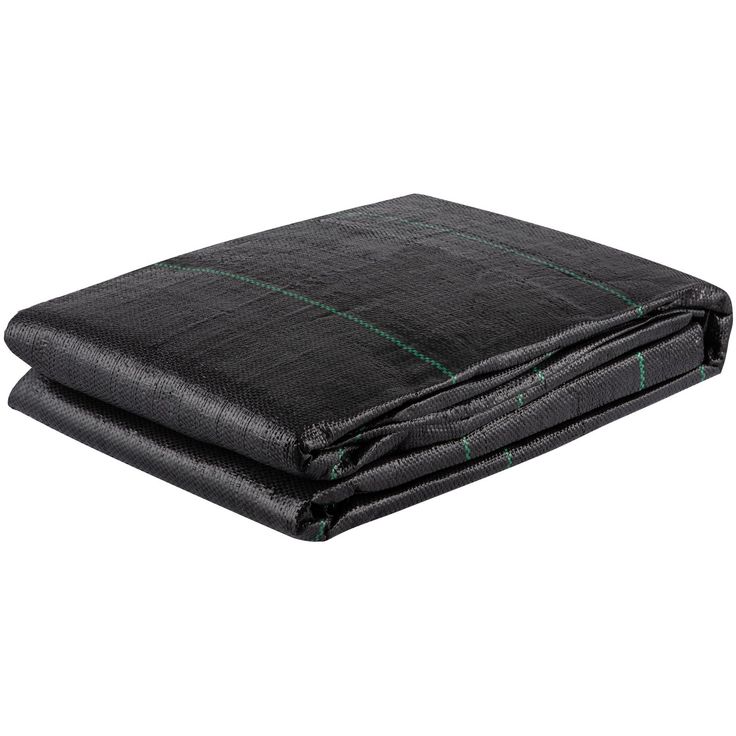
How to Install Garden Fabric
Installing landscaping fabric is a straightforward way to reduce weed growth in your garden. To ensure the effectiveness of the fabric, follow these simple steps:
- Clear the Area: Remove all existing weeds, debris, and rocks from the area where you plan to lay the fabric.
- Prepare the Soil: Level the soil to prevent water from pooling and ensure smooth fabric laying. It’s essential for the fabric to have direct contact with the soil.
- Cut to Size: Measure and cut the landscaping fabric to fit the garden bed, allowing a few extra inches on each side for overlap.
- Secure the Fabric: Lay the fabric flat over the soil, and use landscape staples to pin it down at the edges and every few feet inside the area.
- Cut X’s for Plants: If inserting plants, cut an ‘X’ into the fabric where each will go. Make the opening large enough to accommodate the plant but not too large to allow weeds through.
- Insert Plants: Carefully plant your flowers or shrubs through the ‘X’ cuts into the soil below the fabric.
- Add Mulch or Stones: Once plants are in place, cover the fabric with mulch or stones to enhance its appearance and functionality.
- Water Your Garden: Water the plants to settle the soil and the mulch, aiming the water at the base of the plants to prevent washing away the covering.
By following these steps, your garden is now equipped with a weed barrier that will aid in maintaining a beautiful and weed-free landscape.
Tips for Maintaining Weed-Free Gardens with Fabric
Maintaining a weed-free garden when using landscaping fabric requires regular attention and care. By following these essential tips, you can enjoy a thriving garden with minimal weed issues.
Regular Checks
One of the primary steps in maintaining an effective barrier against weeds is to inspect your garden regularly. Make it a habit to look for any tears, holes, or gaps in the landscaping fabric. Identifying these issues early allows you to take action before weeds have a chance to establish themselves. By staying proactive, you can ensure that your fabric continues to function as intended.
Repair Damage
If you discover any damage to the fabric, be sure to repair it promptly. You can fix tears or gaps using additional pieces of landscaping fabric or special repair tape designed for this purpose. Securing any damaged areas prevents sunlight from reaching the soil and maintains the effectiveness of your weed barrier.
Soil Care
Nurturing the soil beneath the fabric is crucial for your plants’ health. Regularly enhance the soil by adding compost or organic fertilizer on top of the landscaping fabric. This practice provides essential nutrients to your plants while keeping weeds at bay. Healthy plants will thrive even when limited by a weed barrier.
Mulch Refreshing
Mulch is an important companion to landscaping fabric. Each season, replace or refresh the mulch layer over the fabric to maintain its effectiveness. This practice not only suppresses weeds but also helps retain moisture in the soil. The new mulch layer will continue to block sunlight and prevent weed seeds from germinating.
Edge Maintenance
Pay attention to the edges of the landscaping fabric. Ensure that the edges remain buried or securely fastened to the ground. This technique helps prevent weeds from creeping in at the borders. Tightening edges can also enhance the overall aesthetics of your garden.
Watering Practices
Efficient watering practices contribute to the success of your garden. Consider using a drip irrigation system or soaker hoses placed beneath the fabric. This approach allows for effective watering while minimizing the risk of weed growth on the surface.
Keep it Tidy
Finally, maintaining cleanliness in your garden is essential for weed control. Regularly remove any plant debris, fallen leaves, or organic matter from the fabric’s surface. Leftover debris can provide a fertile environment for weed seeds to take root. Keeping your garden tidy prevents potential weed growth and promotes a healthy garden ecosystem.
By sticking to these simple guidelines, you can maintain a neat and orderly garden while minimizing weed issues, ensuring that your landscape thrives beautifully.
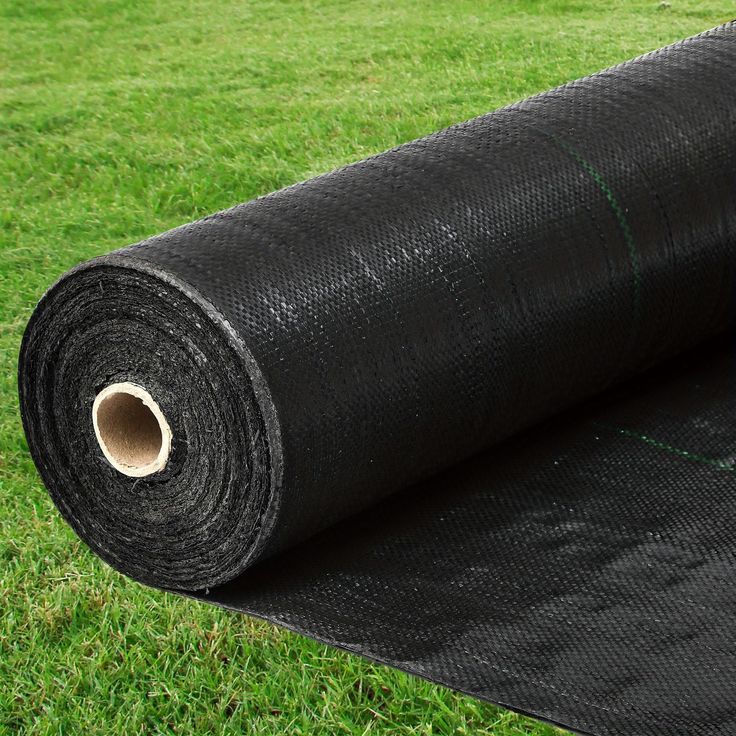
Common Mistakes to Avoid When Using Garden Fabric
Using landscaping fabric can significantly enhance your garden’s health, but avoiding common mistakes is crucial for its effectiveness. Here are some pitfalls to steer clear of when installing and maintaining garden fabric:
Overlapping Incorrectly
One of the most common mistakes is overlapping the edges of the fabric incorrectly. When laying it down, ensure that the edges overlap properly to create a barrier against weeds. If there are any gaps, weeds can find their way through, undermining the fabric’s purpose.
Not Securing Fabric Well
Another mistake is not securing the fabric adequately. Use enough staples or garden pins to hold the fabric firmly in place. Loose fabric can lead to weed penetration and growth, rendering your efforts ineffective. Properly securing the fabric prevents movement and maintains its effectiveness.
Ignoring Soil Preparation
Before laying down the fabric, thorough soil preparation is essential. Remove all existing weeds and level the soil. Failing to do so results in weeds growing beneath the fabric, which can push it up over time and create more problems.
Cutting Holes Too Large
When making slits for plants or flowers, keep the cuts small. Large holes can allow weeds to grow through and disrupt your carefully planned garden. Smaller cuts for seedling placement help maintain weed suppression while still allowing your plants to thrive.
Forgetting to Update Mulch
Remember to replenish the mulch on top of the fabric periodically. Over time, mulch can break down and lose effectiveness. Adding a new layer not only suppresses weeds but also keeps your garden looking fresh and well-maintained.
Skimping on Quality
Choosing low-grade fabric is another common error. Invest in durable, high-quality landscaping fabric that will last longer and perform better. Lower-quality fabric may fray or degrade faster, necessitating replacement sooner than expected.
Neglecting Edges
Unsecured edges of the fabric are weak points where weeds can invade. Be diligent about securing the fabric edges properly to prevent any potential breaches. A well-secured edge is essential for maintaining a weed-free environment.
Using Fabric in the Wrong Areas
Finally, assess where to use the fabric. Not all garden areas require landscaping fabric. Consider where it will be most effective and avoid using it unnecessarily in low-weed areas. Strategic placement maximizes its benefits without wasting resources.
By dodging these errors, you create an attractive and low-maintenance garden. The proper use of landscaping fabric makes your garden a weed-free zone, ultimately aiding your plants to flourish.
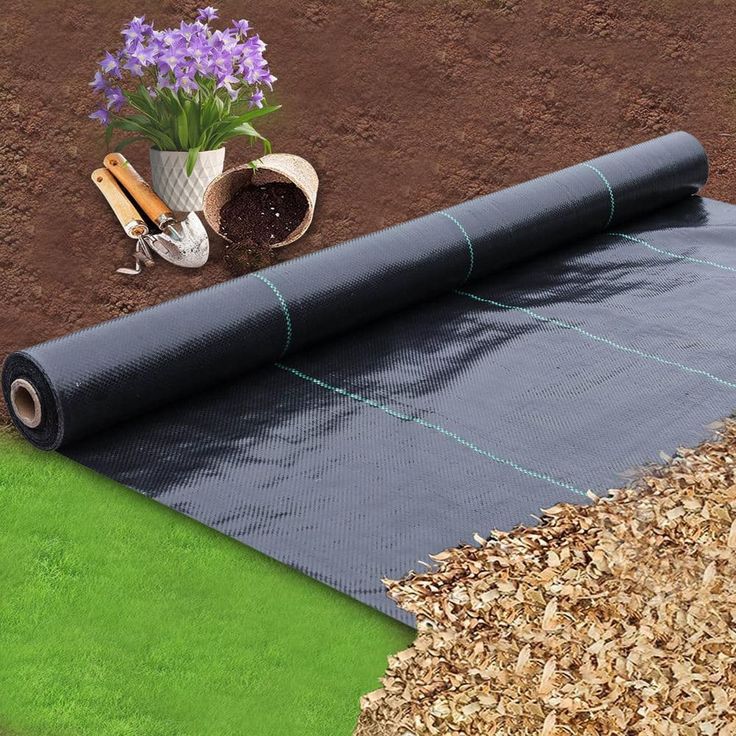
Alternatives to Landscaping Fabric
While landscaping fabric is effective for weed control, some gardeners seek alternatives. Here are options to consider:
- Organic Mulches: Materials like wood chips, straw, or bark can suppress weeds naturally. They also add nutrients to the soil as they decompose.
- Ground Cover Plants: Low-growing plants can provide a living mulch. They cover the soil, blocking weeds and beautifying your garden.
- Plastic Sheeting: Black plastic can prevent weed growth. It’s less permeable than fabric, so use it where minimal water penetration is needed.
- Newspaper or Cardboard: These biodegradable options can block weeds. Cover them with mulch to improve appearance and effectiveness.
- Corn Gluten Meal: Applied as a pre-emergent, it can help prevent weed seeds from sprouting. It is a natural option that also feeds the soil.
- Hand Weeding: For small gardens, regular hand weeding can be practical. It’s labor-intensive but offers precise control over weeds.
- Cultivation: Shallow tilling can disrupt weed growth. Be careful not to till too deeply, which could bring more weed seeds to the surface.
Each alternative has its pros and cons. Consider your garden’s needs, your maintenance preferences, and environmental impact before choosing. Some options may be more suited to one’s personal commitment to organic gardening, while others might prioritize long-term convenience. Regardless of your choice, the goal remains the same: a weed-free and thriving garden.

Cost-Effectiveness of Landscaping Fabric
When considering the use of landscaping fabric, cost-effectiveness is a key factor. Here’s a breakdown of why landscaping fabric can be a cost-efficient choice for garden maintenance:
- Initial Investment vs. Long-Term Savings: While there’s an upfront cost for purchasing landscaping fabric, it leads to long-term savings. You spend less on weed control products and labor over time.
- Durability: High-quality landscaping fabric is durable and can last for years. You won’t need to replace it often, which saves money.
- Reduced Need for Chemicals: The fabric minimizes the need for herbicides. This is not only better for the environment, but also reduces your spending on chemicals.
- Less Water Wastage: With improved soil moisture retention, you’ll save on your water bill. The fabric helps keep the soil moist, needing less watering.
- Time Saving: Time is money. By using landscaping fabric, you’ll spend less time weeding and more time on other garden activities or leisure.
- Multipurpose Use: The fabric can be used under paths, decks, and patios. It serves various purposes, adding to its cost-effectiveness.
When selecting landscaping fabric, it’s wise to opt for quality. Cheaper options may not deliver the same benefits and might need to be replaced more often. In the end, investing in a robust and high-grade fabric will ensure weed-free gardens and better financial savings over time.
